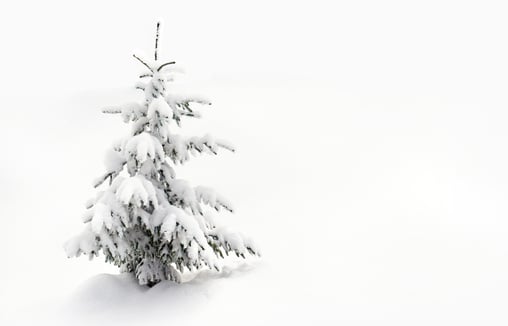If you spend time outdoors in the wintertime, you are very likely to encounter the wonders of snow. As you look around, it’s easy to see all of the trees and other large plants that are present above the snow and question how they are surviving. However, shrubs and small trees might also be hidden beneath the snow for most of the winter and these plants are adapted to make it through the winter as well.
It’s important to understand some basic knowledge about the different types of plants to get a grasp of how their strategies might be different in the winter. Deciduous trees, like the quaking aspen, lose their leaves in the fall, while evergreens, like lodgepole pines or douglas firs, keep their foliage throughout the winter. Another important distinction is perennial plants, which are those that live through the winter and annual plants that only live one season and whose growth depends on seeds surviving the winter.

For all plants, regardless of their differences, sunlight is vital for photosynthesis. Photosynthesis is the process that allows plants to convert sunlight, water and carbon dioxide into energy to stay alive.
In the wintertime, sunlight becomes a much scarcer resource. The shorter hours of daylight and the weaker angle of the sun cause the change in weather and cooler temperatures. Deciduous plants notice this change in sunlight and will drop their leaves as a result. Dormant states are triggered that subsequently slows growth and respiration, and plants store carbohydrates and nutrients in their root systems to be consumed during the winter. But for a good part of our long winters, there is still enough sunshine for perennials such as sagebrush, columbine, yarrow and others to grow.
The winter condition that often proves troublesome for plants, especially in a place like the Eagle River Valley is the deep snowpack. Most would assume that underneath a thick blanket of white snow there would be no sunlight for photosynthesis. Snowpack reflects back 75-95% of the sun’s light rather than getting absorbed into the snow.
However, multiple studies have shown that there is still photosynthetic activity underneath the snow. In fact, some plants are even known to begin flowering underneath the snow before melt occurs. Activity has been measured as deeply as 80cm beneath the snow surface and the wavelengths of light that penetrate the greatest depths are those near optimal for chlorophyll absorption. Red photons have a short wavelength and therefore can penetrate deeper into snow. Growing under the snow helps gives some plants a competitive advantage for when the snow melts and they become shaded by fast-growing plants, such as grasses.

Spikelets Covered in Frost.
Being buried underneath the snowpack can also benefit certain plants because it both acts as an insulator and windbreaker that protects them from the harsh conditions. So less snowpack could actually be detrimental to early spring vegetation for that reason.
Next time you go outdoors to ski down the slopes, build something out of snow, or just find your eyes wandering around the beauties of winter, look for signs of plants hidden beneath the snow surface because come melt season, they will somehow emerge after surviving another winter.
Reese Farrow is a Naturalist at Walking Mountains Science Center and greatly enjoys spending time outdoors, and after recently learning how to ski he plans to spend even more time outdoors this season.








